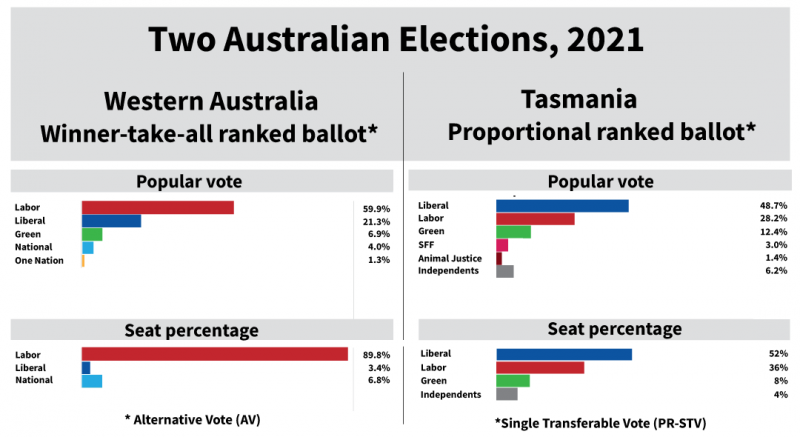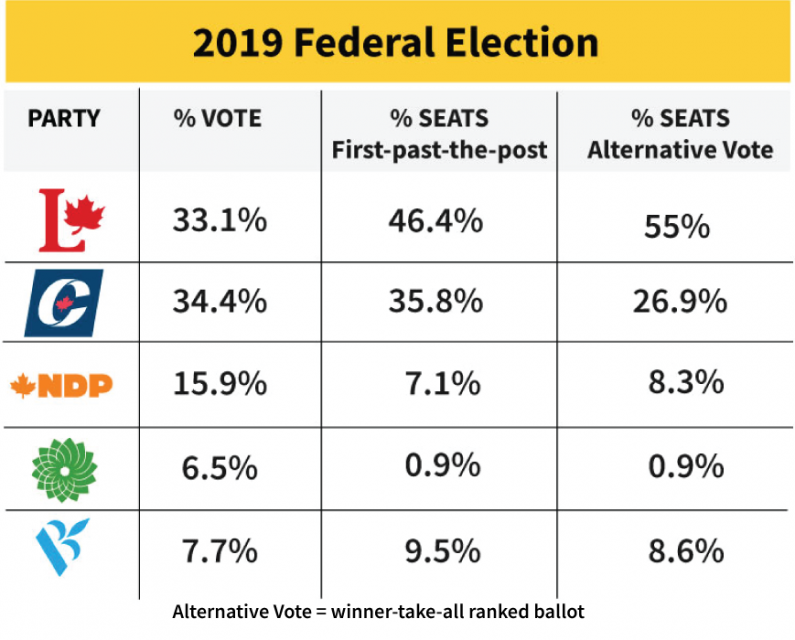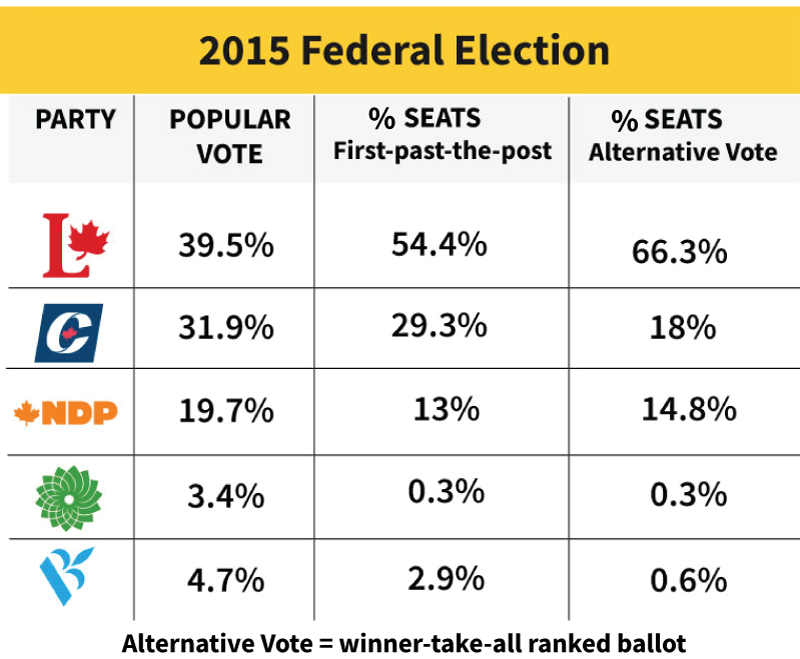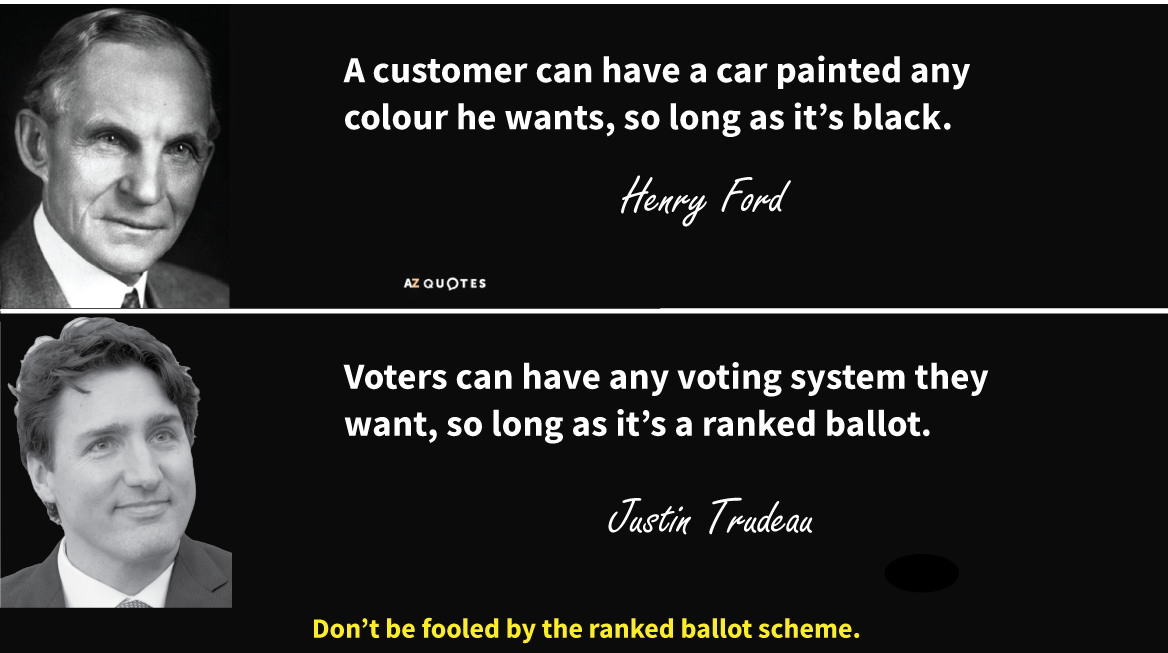
Experts show Trudeau’s preferred system would skew results further
in favour of the Liberals
Read below for the results expert simulations of outcomes with a winner-take-all ranked ballot.
A simulation by electoral systems expert Antony Hodgson, President of Fair Voting BC, shows that using Trudeau’s preferred voting system (Alternative Vote – the winner-take-all ranked ballot) for the 2019 election would likely have significantly increased the number of seats won by the Liberal Party.
In fact, it could quite plausibly have delivered them a solid majority of as many as 186 seats — a 70-seat winner’s bonus compared to the 116 seats we estimate they would have won with 33.1% of the popular vote under a proportional system.
Learn more about the problems with Alternative Vote (winner-take-all ranked ballot) here.

Earlier research by Janson and Siaroff (2004) shows a similar pattern in Canadian federal elections from 1997 to 2000. Under our existing system, the Liberals won 38% of the vote but captured 51% of the seats in the 1997 election. With Alternative Vote (winner-take-all ranked ballot), the Liberals would have taken 57% of the seats with the same level of support. Similar projections of the 1980 and 2000 federal elections showed the Liberal Party gaining larger majorities under Alternative Vote than first-past-the-post.
During the 2015 election, Justin Trudeau’s Liberals promised to deliver a new electoral system for Canada in 2019, to “make every vote count,” and to use an evidence-based approach to policy-making on electoral reform. Among the experts who testified before the ERRE, 88% recommended proportional representation. Only 4% recommended Trudeau’s preferred system, Alternative Vote (winner-take-all ranked ballot).
Ontario provincial elections
Ontario’s 2022 Provincial Election
Electoral modelling expert Ryan Campbell has completed a simulation to show the results of the winner-take-all ranked ballot (properly called Alternative Vote) for the 2022 election in Ontario.
The main result: Doug Ford’s PCs would still have won a huge false majority government, even though a majority of voters preferred other parties. But the Liberals would have almost doubled their seats (going from 8 to 14).
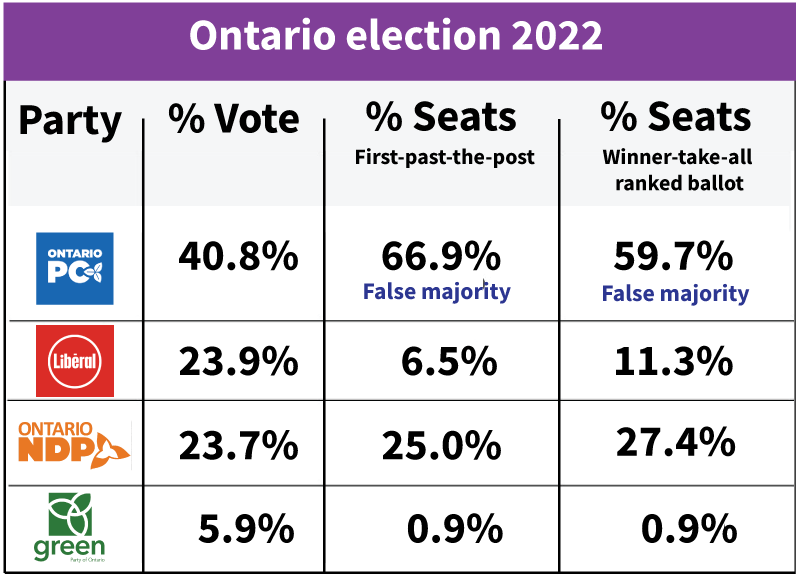
Previous Ontario provincial elections
Electoral modelling expert Byron Weber Becker (who did work for the federal electoral reform committee – ERRE) has completed simulations on the effects that the winner-take-all ranked ballot (properly called Alternative Vote) would have had on previous elections in Ontario.
The result: Winner-take-all ranked ballot would have helped the Liberal Party at the expense of other parties in every election since 2003. Even their 2011 minority government would have been turned into a majority.
In every election since 1987 except one, the Liberals would have won more seats with winner-take-all ranked ballot. The exception is 1990, when their number of seats would have been unchanged.
(Source: http://election-modelling.ca/ontario/overview/allSimulations.html)
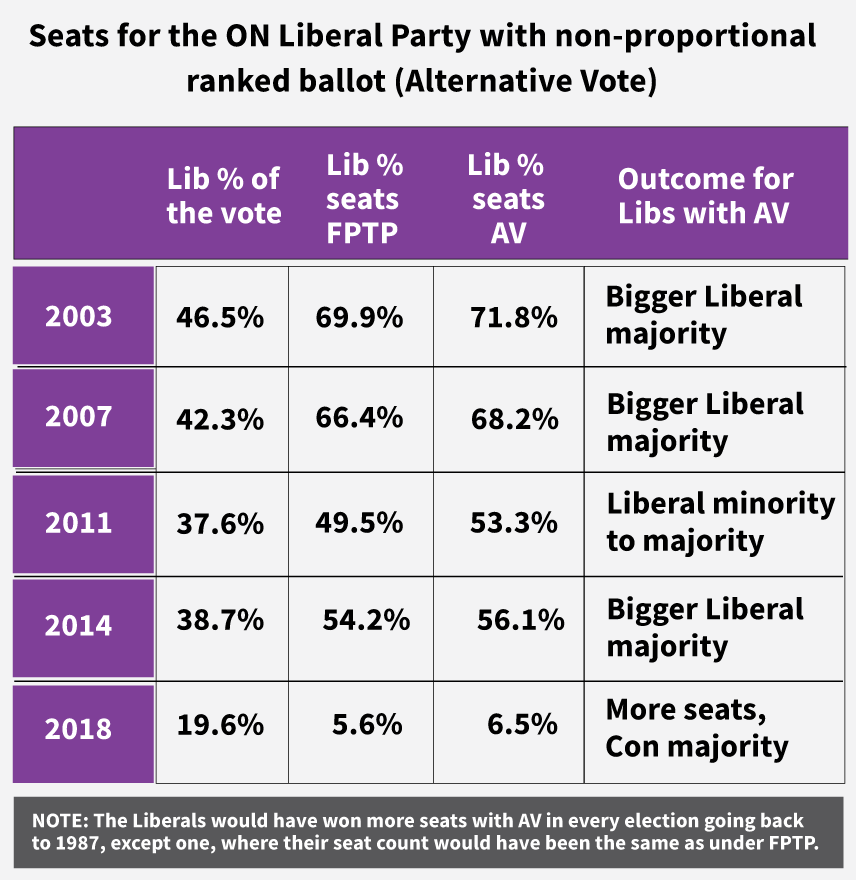
Families of voting systems
A ranked ballot is not actually a voting system – it is just a tool where voters can indicate their preferences by marking 1, 2, 3, etc. A ranked ballot can be used in either proportional or non-proportional systems.
However, when the Liberals and the media say “ranked ballot” they always mean the winner-take-all system, properly called Alternative Vote. The ranked ballot system that is being pushed by Justin Trudeau and former Ontario Liberal leader Steven Del Duca is just another winner-take-all system – one that can distort results even more than first-past-the-post.
Learn more about the problems with winner-take-all ranked ballot by clicking here.
Proportional representation systems with a ranked ballot
Proportional representation means that if a party gets 39% of the vote, they get roughly 39% of the seats. Almost every voter will elect an MP who shares their values. A ranked ballot can be used very successfully within a proportional system, such as:
Single Transferable Vote (PR-STV): Voters elect a teams of local MPs in multi-member ridings. PR-STV was recommended by the BC Citizens’ Assembly in 2005. It is used in Ireland, Tasmania, Australian Capital Territory and was used to elect provincial MLAs in Winnipeg and Edmonton between 1920 and 1950.
Ranked ballots can also be used within Mixed Member Proportional or Rural-Urban Proportional. For example, in the UK the Jenkins Commission recommended an MMP system with local MPs elected using the ranked ballot.
A ranked ballot used within a proportional system will give a different result than the within the winner-take-all system being pushed by the Liberals. See final image on this page for a comparison.
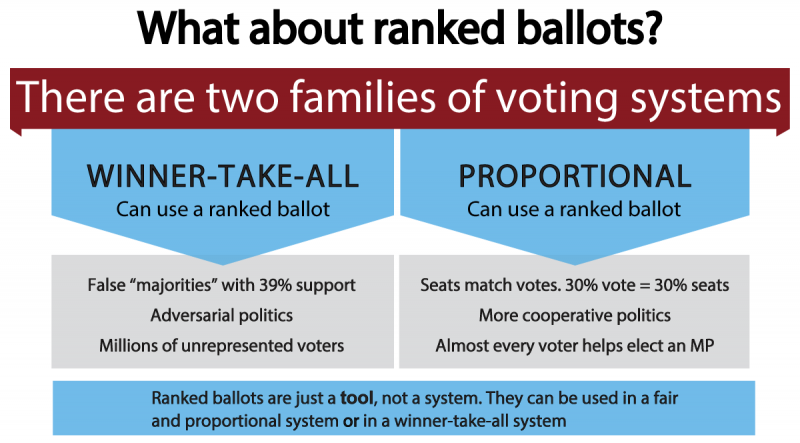
Comparing outcomes under a WINNER-TAKE-ALL system with a ranked ballot (left) and
a PROPORTIONAL system with a ranked ballot (right).
